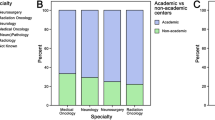Abstract
Magnetic resonance imaging (MRI) or computerized tomography (CT) is routinely performed after resection of brain metastases (BrM), regardless of whether there are specific clinical concerns about residual tumor or potential complications. Routine imaging studies contribute a significant amount to the cost of medical care, and their yield and utility are unknown. An IRB-approved retrospective chart review study was performed to analyze all craniotomies for BrM performed at our institution from 2005 to 2012. Descriptive statistics were used to quantify the yield of postoperative imaging. 218 consecutive patients underwent 226 craniotomies for BrM. In 21 cases, new or worsened neurologic deficits occurred after surgery (9.0 %), and 19 of the 21 underwent postoperative imaging. 9 of the 19 patients (47 %) had significant findings on postoperative imaging, and 2 patients required reoperation. 201 patients had no new neurologic deficits (91 %), and 23 of these patients had no postoperative imaging. Of the 178 remaining patients, 160 underwent postoperative MRI and 18 underwent postoperative CT. 9 patients (5.1 %) had unexpected adverse imaging findings; 6 had small stroke, 1 had a subdural hemorrhage and 2 had possible or definite venous sinus occlusion. None of the imaging findings led to changes in management. 182 patients underwent imaging appropriate to detect residual tumor (177 gadolinium enhanced MRI and 5 contrast enhanced CT). Of these patients, 16 were known to have small residual tumors based on intraoperative findings. Of the remaining 166 patients felt to have had gross total tumor resection, 9 (5.4 %) were found to have a small amount of residual tumor on postoperative imaging; no patient had a change in treatment plan as a result. Routine postoperative imaging in patients undergoing craniotomy for BrM has a very low yield and may not be appropriate in the absence of new neurologic deficits, or specific clinical concerns about large amounts of residual tumor or intraoperative complications.
Similar content being viewed by others
References
Nayak L, Lee EQ, Wen PY (2012) Epidemiology of brain metastases. Curr Oncol Rep 14:48–54
Patchell RA, Tibbs PA, Walsh JW, Dempsey RJ, Maruyama Y, Kryscio RJ et al (1990) A randomized trial of surgery in the treatment of single metastases to the brain. N Engl J Med 322:494–500
Paek SH, Audu PB, Sperling MR, Cho J, Andrews DW (2005) Reevaluation of surgery for the treatment of brain metastases: review of 208 patients with single or multiple brain metastases treated at one institution with modern neurosurgical techniques. Neurosurgery 56:1021–1034
Sawaya R, Hammoud M, Schoppa D, Hess KR, Wu SZ, Shi WM et al (1998) Neurosurgical outcomes in a modern series of 400 craniotomies for treatment of parenchymal tumors. Neurosurgery 42:1044–1055
Tan TC, McL Black P (2003) Image-guided craniotomy for cerebral metastases: techniques and outcomes. Neurosurgery 53:82–89
Gempt J, Gerhardt J, Toth V, Hüttinger S, Ryang YM, Wostrack M et al (2013) Postoperative ischemic changes following brain metastasis resection as measured by diffusion-weighted magnetic resonance imaging. J Neurosurg 119:1395–1400
Garrett MC, Bilgin-Freiert A, Bartels C, Everson R, Afsarmanesh N, Pouratian N (2013) An evidence-based approach to the efficient use of computed tomography imaging in the neurosurgical patient neurosurgery 73:209–216
Gans JH, Raper DM, Shah AH, Bregy A, Heros D, Lally BE et al (2013) The role of radiosurgery to the tumor bed after resection of brain metastases. Neurosurgery 72:317–325
Hartford AC, Paravati AJ, Spire WJ, Li Z, Jarvis LA, Fadul CE, Rhodes CH et al (2013) Postoperative stereotactic radiosurgery without whole-brain radiation therapy for brain metastases: potential role of preoperative tumor size. Int J Radiat Oncol Biol Phys 85:650–655
Atalar B, Choi CY, Harsh GR 4th, Chang SD, Gibbs IC, Adler JR, Soltys SG (2013) Cavity volume dynamics after resection of brain metastases and timing of postresection cavity stereotactic radiosurgery. Neurosurgery 72:180–185
Conflict of Interest
The authors declare that they have no conflict of interest.
Ethical Standards
We the authors declare that the experiments comply with the current laws of the country in which they were performed.
Author information
Authors and Affiliations
Corresponding author
Rights and permissions
About this article
Cite this article
Benveniste, R.J., Ferraro, N. & Tsimpas, A. Yield and utility of routine postoperative imaging after resection of brain metastases. J Neurooncol 118, 363–367 (2014). https://doi.org/10.1007/s11060-014-1440-3
Received:
Accepted:
Published:
Issue Date:
DOI: https://doi.org/10.1007/s11060-014-1440-3




